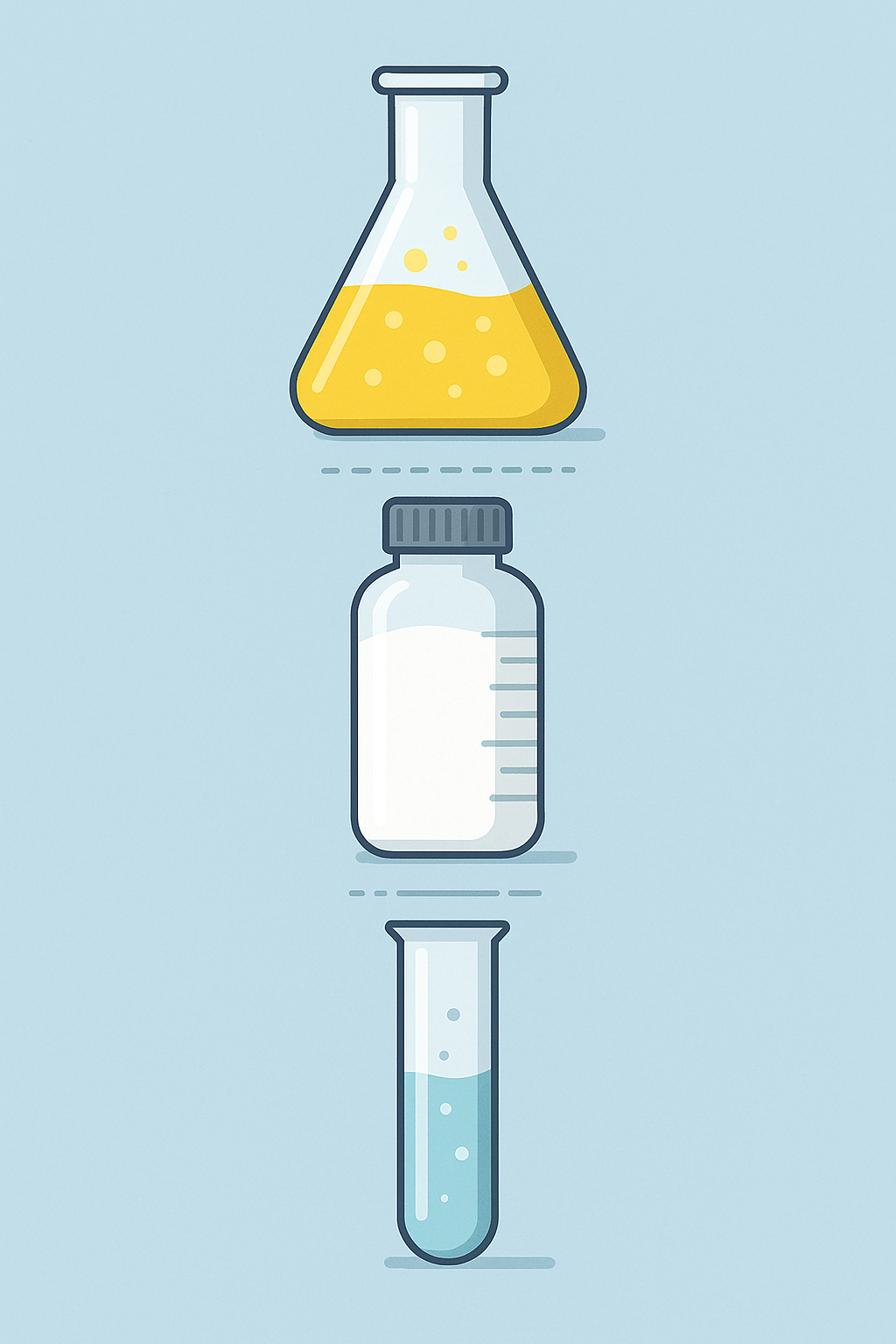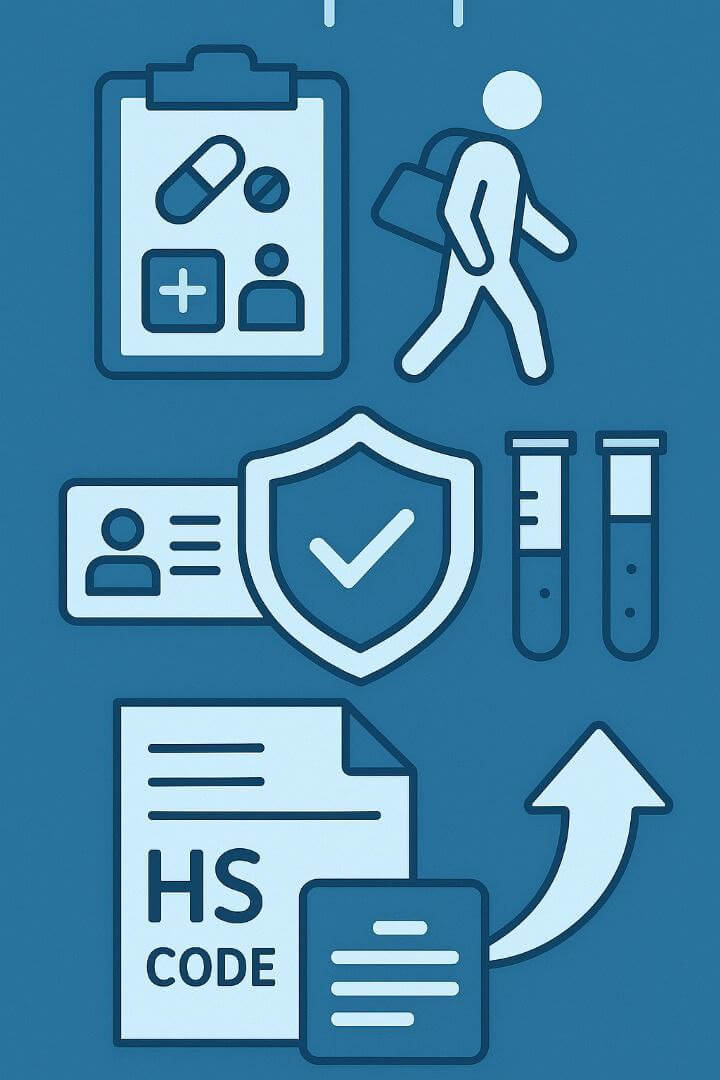Customs Clearance of Laboratory Equipment in Iran (HS Code + Documents & Permits)
To estimate the time and cost of laboratory equipment clearance, contact Saba Tarkhis experts.
Instant & Free Consultation.png)
1) Detailed Description of Laboratory Equipment
2) Categories of Laboratory Equipment with Full HS Code Details
3) Key Points in Laboratory Equipment Clearance
1. Chemical & Physical Analysis Equipment
Spectrophotometer: measures absorption/emission of light by chemicals; used in biochemistry, chemistry, and biotech.
HS Code: 9027.30.00
Gas Chromatography: separates/analyzes chemical compounds in gas/liquid samples; critical in chemical, environmental, and pharma fields.
HS Code: 9027.20.00
Mass Spectrometry: determines molecular mass and identifies compounds; vital in drug testing, biological analysis, and forensics.
HS Code: 9027.80.00
2. Microscopy Equipment
Electron Microscope: uses electron beams to create ultra-detailed images; for nano-scale and atomic research.
HS Code: 9012.10.00
Fluorescence Microscope: leverages fluorescence to view/analyze samples; common in biology and cell research.
HS Code: 9012.90.00
3. Biotechnology & Medical Equipment
Centrifuge: separates components by density in bio/chemical samples; widely used in medical, biological, and chemical labs.
HS Code: 8421.19.00
PCR (Polymerase Chain Reaction): a core tool in genetic and molecular biology research to amplify DNA/RNA.
HS Code: 9027.80.20
4. General Laboratory Equipment
Pipette: measures/transfers small liquid volumes; available in manual and electronic types.
HS Code: 8413.19.00
Incubator: maintains samples at controlled temperatures; important for cell growth and sample storage.
HS Code: 8419.89.30
Shaker: mixes/stirs liquid samples for experiments. HS Code: 8479.89.90
5. Laboratory Consumables
Key examples include:
Diagnostic Kits: used to detect/diagnose diseases and chemicals in lab samples.
HS Code: 3822.00.00
Chemical Reagents: used in chemistry and biology labs for various reactions.
HS Code: 2933.99.90
4) HS Codes / Selected Laboratory Items
| Item/Category | Short Description | HS Code |
|---|---|---|
| Spectrophotometer | Light absorption/emission measurement | 9027.30.00 |
| Gas Chromatography | Separation & analysis of compounds | 9027.20.00 |
| Mass Spectrometer | Identification & molecular mass | 9027.80.00 |
| Electron Microscope | Nano-scale imaging | 9012.10.00 |
| Fluorescence Microscope | Fluorescence-based observation | 9012.90.00 |
| Centrifuge | Density-based separation | 8421.19.00 |
| PCR | DNA/RNA amplification | 9027.80.20 |
| Pipette | Measuring/transferring liquids | 8413.19.00 |
| Incubator | Controlled-temperature sample storage | 8419.89.30 |
| Shaker | Mixing liquid samples | 8479.89.90 |
| Diagnostic Kits | Laboratory assays | 3822.00.00 |
| Chemical Reagents | Laboratory reactants | 2933.99.90 |
Exact classification depends on model, application, accessories, configuration, year of manufacture, and technical documents.
Need precise HS classification, permits, and file preparation? Our team handles the process end-to-end.
Request a Proforma5) Special Conditions for Import & Export of Laboratory Equipment
Technical & health permits: many items especially medical/biotech require permits from bodies like the Ministry of Health, IFDA, and the National Standards Organization.
International certifications: many devices must carry CE or ISO to prove international compliance.
Strict customs controls: certain equipment may face special controls such as detailed physical inspections or special customs approvals.
Foreign exchange & banking rules: imports often require CBI forex permits and payment through official banking channels.
Export controls: some devices with dual-use applications may be export-controlled.
6) Iran Market
Germany: a major exporter of advanced lab equipment, especially in chemical analysis and biotech. USA: advanced medical and biotech devices tailored for diagnostics and analysis.
China: supplier of quality, cost-effective gear, especially for general/basic lab equipment.
Japan: maker of precise, advanced devices like electron microscopes and complex research tools.
South Korea: exporter of modern medical/biotech equipment.
Iraq: one of the largest importers due to proximity and healthcare development needs.
Afghanistan: Iran exports simpler equipment and consumables.
Pakistan: certain medical/lab devices are exported.
Syria: post-reconstruction, demand for lab/medical equipment from Iran has increased.
7) Trade Volume
Imports: volumes are rising, especially in biotech, medical, and chemical fields. Data shows advanced equipment is mainly imported from European and Asian countries. Exports: exports to neighboring countries are increasing, though mostly simpler devices and consumables.
8) Global Market
Germany: leading in high-quality lab devices. USA: among the largest exporters of advanced biotech/medical equipment.
Japan: producer of precise devices like electron microscopes and spectrometers.
China: supplier of general, cost-effective equipment with a strong global position.
South Korea: active in biotech and medical equipment.
USA: imports complex equipment for its advanced research/medical sectors.
China: besides production, a major importer of advanced gear to upgrade research infrastructure.
India: rapid biotech growth requires advanced equipment.
Brazil: broad imports to develop medical and research sectors.
Germany: despite production, imports certain specialized devices.
9) Required Documents for Laboratory Equipment Clearance
- Proforma Invoice
- The first and one of the most important documents for customs includes key details such as item type, quantity, unit price, shipment terms, etc. Helps determine true value and customs duties.
- Commercial Invoice
- Contains final transaction details total value, payment terms, and exact specifications. A main basis for duties/taxes and must match the proforma.
- Packing List
- Detailed packing breakdown: item count per package, weight, volume, and dimensions used to verify the shipment against the commercial invoice.
- Bill of Lading / Air Waybill
- International transport document issued by the carrier shows title to the goods, mode of transport, cargo details, and final destination; retained by customs until release.
- Certificate of Origin
- Confirms exporting country issued by the origin country’s chamber of commerce; affects duties/taxes and preferential tariffs under trade agreements.
- Order Registration Permit
- Importers must obtain an official import order registration from Iran Trade Promotion Organization for the listed goods.
- Health & Technical Permits
- Especially for medical/biotech devices permits from IFDA and Ministry of Health confirm compliance with national health/technical requirements.
- Standards Certificate
- Certain equipment requires national/international standard approvals issued by INS (National Standards Organization of Iran).
- International Certificates
- Complex equipment typically needs CE or ISO showing global compliance; gives assurance to customs and regulators.
- Commercial Card
- Importer must hold a valid Chamber of Commerce card without it, clearance is not possible.
- Customs Declaration
- Includes all cargo details item count/type, value, and weight; submitted by the importer/authorized agent for assessment and release.
- Bank Payment Confirmation
- If paid via bank, a confirmation is required to show lawful settlement of funds.
- Transport Insurance Policy
- Shows the cargo is insured during transit covers incident/damage risks.
- Pre-shipment Inspection Certificate
- Sensitive shipments (like lab equipment) may require PSI by an international inspection company confirms compliance with contract/specs.


FAQs
Are special permits required for biotech equipment?
Yes. Typically permits from the Ministry of Health/IFDA and, in some cases, standards and laboratory approvals.
From which chapter are analytical instruments’ HS codes?
Most analytical/measurement devices fall under chapter 9027; final classification depends on technical specs.
What about items with expiry dates?
Transport/storage conditions and validity upon arrival are checked; non-compliance can block clearance.
Key Notes & Practical Tips
- Confirm HS code and permit requirements for each device/material before final purchase.
- For sensitive items, schedule PSI, calibration, and FAT/SAT acceptance tests.
- Specify transport conditions, insurance, and shock/moisture-proof packaging precisely in documents.
Saba Brokerage’s Special Services for Lab Equipment Clearance
With years of experience clearing sensitive, specialist equipment, we ensure your laboratory devices are released as quickly and smoothly as possible. Our services include:
Specialist documentation consulting: our expert team prepares and reviews all required paperwork, including technical/health permits and international standards.
Legal & technical permits: we obtain all necessary permits from relevant bodies such as the Ministry of Health and the National Standards Organization.
Fast, hassle-free clearance: leveraging extensive experience and effective relationships across customs houses to minimize time and common issues.
Duty cost optimization: using precise tariff knowledge and import rules to reduce customs costs.
Safe transportation: partnering with reputable carriers to ensure safe delivery under transport standards.
Comprehensive reporting: clear, detailed status updates at every stage so you’re fully informed.
With these services, importers can be confident that all import and clearance steps are performed legally, quickly, and with high accuracy.
.png)
